My Blog - Jeff Clarke
Updates and photos from around the world on my travels both through pleasure and work
South Africa Part 1: Of Braai's and Zen

South Africa - Part 1: Of Baai's and Zen
Click on the images to view them at full size.
Almost horizontal, barefoot and embraced by a warm zephyr. We casually scan the glittering wavelets of freshwater. All is not tranquil, because close at hand elemental forces are playing and there is a constant infrasound rumble as, a kilometre away to our right, the crashing waves of the Atlantic Ocean are dissipating their power on a strand of sand separating the lagoon from the salt water. The noise is, distinctly uplifting and strangely soporific. My body is experiencing a rare condition. I am blissfully relaxed in an, almost catatonic, meditative state.
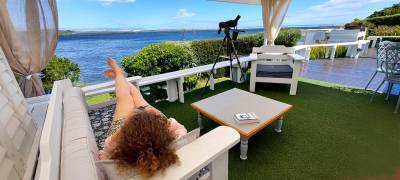
The view of the Klein Lagoon from the veranda © Jeff Clarke
When you finally step off the treadmill you realise just how far and fast you’ve been going. This was our first real physical and mental break since the start of the pandemic, a purely self-nurturing holiday. I’d long promised myself a trip to South Africa and the incentive of another birthday ending in a nought persuaded me to make the commitment.
AirBnB can be a lottery. This time we got the ‘golden ticket’. Our refuge, is situated along the ‘Whale Route’, on the eastern edge of Hermanus, perfectly placed to survey a significant portion of the Klein River Lagoon and backed by the Drakensburg mountains. The deck of our chalet furnishes a bountiful feast of birdlife to nourish our soul and the small barbeque, known locally as a ‘braai’ sitting at one end of the deck, would nourish our bodies.
Our shopping list of things we hoped to see wasn’t particularly long, and it was comfortably eclipsed by the 15m Southern Right Whale that topped it. The Western Cape is also famed for the fantastically floristic Fynbos habitat, that typifies much of the region. Our arrival in late November wasn’t particularly well timed to enjoy a surfeit of flowers or guarantee whales, but work had precluded an earlier arrival.
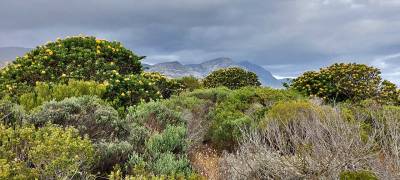
Fynbos in flower, Hermanus Nov 2022 © Jeff Clarke
We joined a whale-watch boat out of Kleinbaai at our first opportunity. We were clearly on a roll as dumb luck delivered us a two Southern Right mother and calf combinations, tight into the coast to limit the risk of Orca attacks. Each individual is identifiable by the unique patterning of barnacle and whale lice encrusted hair follicles that sprout from strategic parts of the head. This was the last knockings of their time in South Africa. Before the month turned these ocean giants would commence the arduous final leg of their journey to the edge of the pack-ice off Antarctica. The doting mothers would get their first meal in many months as the vacuumed up the krill.

Southern Right Whale off Gaansbai November 2022 © Jeff Clarke
Coastal birds abound around Kleinbaai the most emblematic of which was the African Black Oystercatcher, a near endemic of South Africa

Blackish Oystercatcher at Gaansbai Nov 2022 © Jeff Clarke
Kleinbaai and neighbouring Gaansbai are also famous for Great White Shark, a thriving colony of Cape Fur Seal lure the sharks for an annual feast, a huge cage diving industry has built up in the area to provide the opportunity for face-to-face encounters with this impressive predator. Of late the Great Whites have largely disappeared and any that linger tend to wash up on the local beaches having had a full hepatectomy, courtesy of two Orca (Port and Starboard) with a taste for liver. Our cage-dive was predictably lacking in white sharks, but we did have several Bronze Whalers for company.

Cape Fur Seal, Gaansbai Nov 2022 © Jeff Clarke

Bronze Whale Shark off Gaansbai Nov 2022 © Jeff Clarke
Fynbos is a specialised heathland-like scrub habitat, restricted to the Cape of South Africa, that harbours an astonishing diversity of flowering plants, in excess of 9,000 species. The peak of flowering is in August and September, so we were well-outside the prime period, nevertheless we still found a number of protea and other species still in flower. The associated fauna is limited but often specialised with regard to the habitat. A walk through the Fernkloof Nature Reserve close to our base, whetted our appetite to return at the peak flowering period. The walk here also provided us with our only Ground Woodpecker encounter and bestowed upon us our best views of the sumptuous Orange breasted Sunbird. Sunbirds in general are pretty dazzling creatures but you almost need sunglasses just to gaze upon this iridescent beauty. The diversity and abundance of sunbirds in this region is testament to the availability of nectar-rich plants.
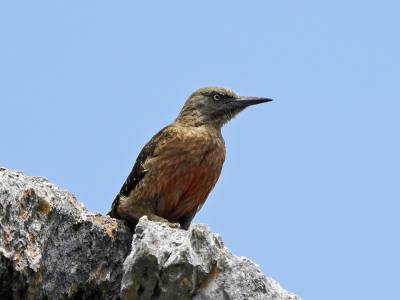
Ground Woodpecker Nov 2022 © Jeff Clarke
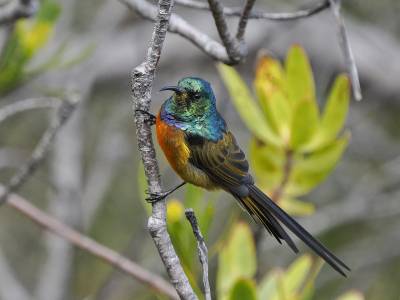
Orange-breasted Sunbird Nov 2022 © Jeff Clarke
Much of the Cape consists of rolling farmland and the region is a bread-basket for the country. It is home to South Africa’s national bird, the Blue Crane. We traversed this rippling landscape as we journeyed to Grootvadersbosch Nature Reserve, our closest remnant of Afro-montane forest habitat. We anticipated the Cranes would be distant specs, but fortune smiled when we found a small group of birds close to the roadside just east of Stanford. Their exquisite powder-blue plumage is a sight to behold. Extra-long tertial feathers drape like tails on a dinner jacket. They don’t have a top-hat to match but they do have a disproportionately large and strangely shaped head. A switch flicked in the heads of an obvious pair, the sound of bugling heralded the dance, and the leaping commenced. Their cavorting was taking them further away and too soon the wobbling air began to obscure their details. The moment was short and sweet.

Blue Crane dancing, Nov 2022 © Laura Dennis
Grootvadersbosch was a long haul from Hermanus, so bird activity had reached its nadir of the day by the time we arrived, on what would prove to be a baking hot day. As a result we barely scratched the surface of its potential, but we persisted and did eventually winkle out some gems, including Cape Batis, Swee Waxbill and a Klass’s Cuckoo. If you do plan a visit, get there early.
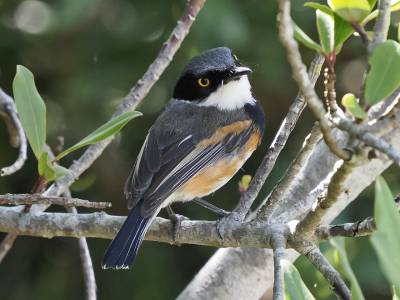
Cape Batis Nov 2022 © Jeff Clarke

Klass's Cuckoo Nov 2022 © Jeff Clarke
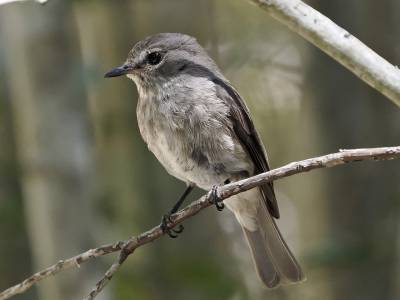
African Dusky Flycatcher Nov 2022 © Jeff Clarke
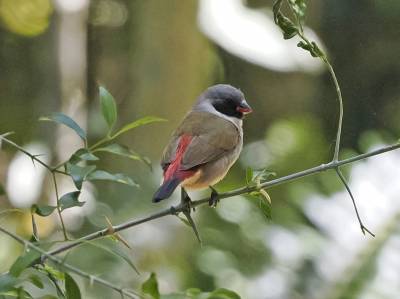
Swee Waxbill Nov 2022 © Jeff Clarke
Other than a trip out to the most southerly point in Africa the rest of our first week was largely spent at our Klein Lagoon base. Even from the comfort of the chalet deck we were able to record a remarkable 70 species of bird during the week and indeed photograph many of them. The small garden had a variety of bird feeders and a bird bath that attracted an incredible diversity of species, including, somewhat unexpectedly, Cape Francolin, and Helmeted Guineafowl.

Cape Francolin Nov 2022 © Jeff Clarke
Our mammal list from the chalet was small but definitely eclectic. The sun had already set on our first evening when a couple of Cape Gulls began yelping and dive bombing something in the lagoon very close at hand a scan with binoculars revealed the distinctive profile of an otter, pretty soon a second animal appeared. There was no light for photography, but we could see enough to confirm these animals as Cape Clawless Otters.
We had a brief view of Small Grey Mongoose and occasional sightings of Cape Vlei Rat early in the morning at the edge of the lagoon. By far our most commonly sighted mammal was Rock Hyrax, or Dassie as it known locally. They are the closest living relative of the elephant, but luckily an adult is only the size of small dog. Otherwise, they’d never fit under the chalets, which is where they clearly lived and raised their young. If you took them by surprise they would ‘freeze’ but never take their eyes off you. The second you looked away. They’d be gone. A bit like the ‘Weeping Angels’ from Dr Who, only in reverse. Laura fell ‘in love’ with them, especially the babies.
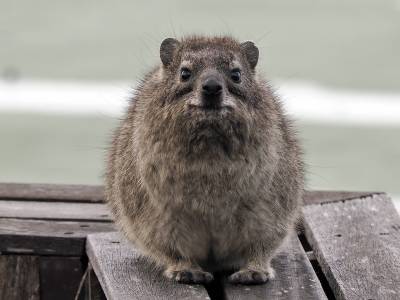
Rock Hyrax (Dassie) Nov 2022 © Jeff Clarke
The very first bird on our ‘chalet’ list was Hadeda Ibis, it wasn’t flying across the lagoon, it was pootling around in the small garden below our deck, probing the grass for invertebrates. It set the tone for the potential of our little plot of paradise.
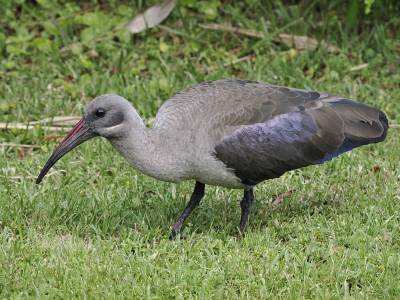
Hadeda Ibis Nov 2022 © Jeff Clarke
The seed feeder and bird table were constantly visited by granivorous birds of many kinds. The most significant of which was a pair of Southern Grey-headed Sparrows. They were well beyond the mapped distribution for this species, so it represents a significant range extension. The most visited feeder was the sugar-water. A myriad of species took advantage of its syrupy nutrition, but the superstars were the sunbirds and appropriately the sugarbirds. Cape Sugarbird being an endemic species associated with the distribution of Fynbos. The most abundant Sunbird was the diminutive Lesser Double-collared Sunbird, closely followed by the gorgeously iridescent Malachite Sunbird, then finally Amethyst Sunbird. This latter species seemed to provoke undistilled rage in their Lesser Double-collared cousins, almost every time the paid a visit to the feeder they got attacked.

Southern Grey-headed Sparrow Nov 2022 © Jeff Clarke
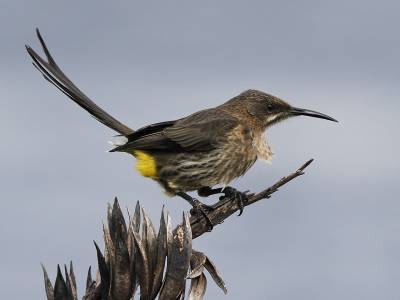
Cape Sugarbird Nov 2022 © Jeff Clarke
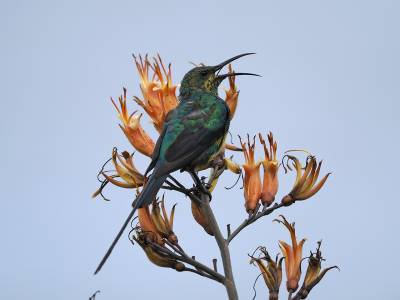
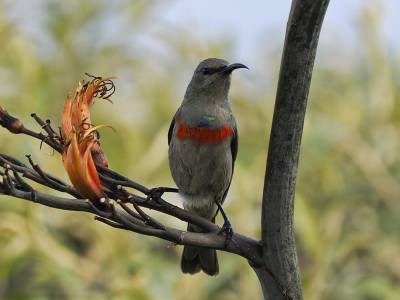
Sunbirds. from left Malachite and Lesser Double Collared Nov 2022 © Jeff Clarke
The bird bath was incredibly popular and hosted some delightful birds, notably Cape Robin-chat, Cape Bulbul, Fiscal Flycatcher, Cape White-eye, Cape Sparrow and Olive Thrush, to name but a few.

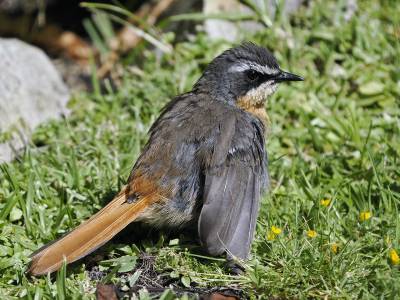
Fiscal Flycatcher (left), Cape-Robin-chat (right) Nov 2022 © Jeff Clarke
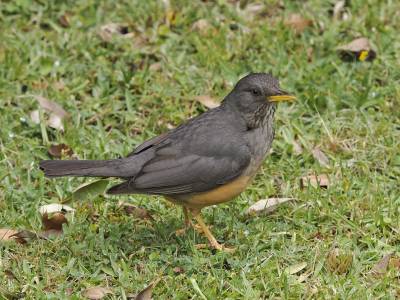
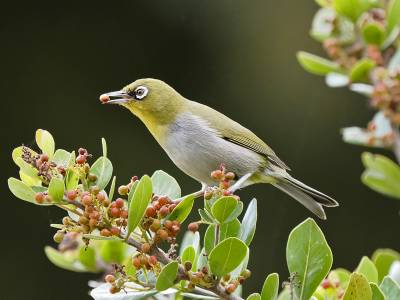
Olive Thrush (left) & Cape White-eye (right) Nov 2022 © Jeff Clarke
Towards the end of our week-long stay in Hermanus we had a near flat calm morning. We took the opportunity to take the two-person canoe, that comes with the property, for a 6.5km paddle around the western end of the lagoon. It was a wonderfully relaxing and immersive experience, though thankfully not in the capsizing way, had we realised how stable our vessel was we’d probably have risked taking one of the cameras. You become part of the canoe and less human-like, this allowed us to get significantly closer to many of the birds we encountered without disturbing them. We did our best to minimise any disturbance, though not all the species had the same ‘flight’ distance and so it was a fascinating learning experience. Most species were completely unphased by our presence, but the Reed Cormorants were unexpectedly jittery, especially if they were gathered on perches in a flock. It was the canoe that allowed us to confirm that the distant plovers we could scope from the deck of the chalet were in fact White-fronted and Kittlitz’s Plovers.

Klein Lagoon canoing Nov 2022 © Jeff Clarke
On our final evening in Hermanus we did a careful wander along the sandbar that divides the lagoon from the Atlantic. This is a regular walking area for beachcombers and dog-walkers, most of the latter were failing to observe the dogs on leads notices at the beach entrances, even so we were astonished to see dozens and dozens of nesting White-fronted Plovers, right next to where some of the heaviest human traffic was concentrated. Humans were largely ignored particularly as many of the birds were engaged in very aggressive territorial and mate disputes. These birds blend in so well with their habitat that I suspect most humans would never notice a sitting bird.
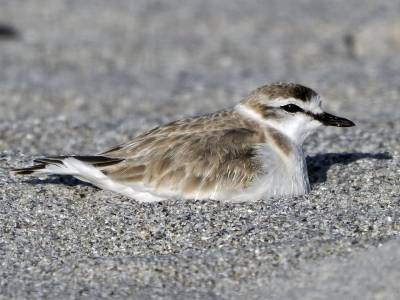
White-fronted Plover on nest Klein Lagoon Nov 2022 © Jeff Clarke
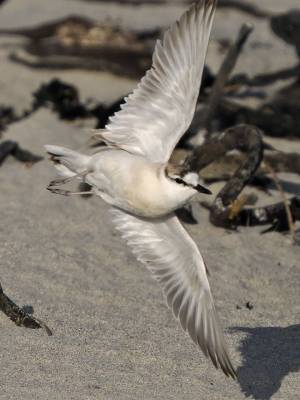

White-fronted Plover in aggressive intraspecific competition for territories - Klein Lagoon Nov 2022 © Jeff Clarke
It was hard to leave this idyll but the following morning we packed our bags and headed for the West Coast National Park and a rendezvous with a raptor.
You can read about htis part of our South African odyssey in Part 2.

